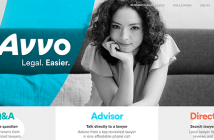Improve the networking benefits that LinkedIn can bring by taking some of the steps used by this master LinkedIn legal networker.
The social and business networking site, LinkedIn, has more than 259 million members worldwide and provides a whole new way to network.
But its networking benefits don’t materialize magically. Like working a room, to bring in new clients you also need to work LinkedIn.
1. Update Your Profile Frequently
Start thinking about your profile as a living, breathing thing. It needs to be updated frequently, so you stay relevant and timely.
“I update my profile regularly,” says Baruch Cohen, a bankruptcy and business litigation attorney. “Every time I post an update it goes out to 4,407 contacts. Every legal event that I’m a part of gets posted. If I win a summary judgment, it gets posted. I post everything on my profile page and every single group that I’m affiliated with. Each one of those groups has thousands of people who are members and they see it.”
Posting on a consistent basis has a lot of benefit to it, including staying relevant, deepening connections, and fueling discussions. And there’s another added benefit.
“By posting at this volume, anyone who needs or knows of someone who needs a business litigation attorney will think immediately of Baruch Cohen,” he says.
With regard to your profile, you also want to optimize your profile description, as it’s a great way for potential clients or referral lawyers to find you.

“The profile description is really valuable for lawyers trying to find new clients,” says David Barrett, a general practice and civil litigation attorney. “For instance, if you are an employment lawyer who works with companies on employment litigation and you are looking to find human resources directors in your state, the profile description and the search function help you find those kinds of professionals whereas on Twitter it’s more difficult to find professionals because the profile feature and search feature are not as robust.”
With regard to your profile, you also want to optimize your profile description, as it’s a great way for potential clients or referral lawyers to find you.
2. Connect Constantly

Next you want to think about the connections you’re making. The whole point of LinkedIn is to build a network of business connections, so make sure you’re connecting with people on a regular basis.
“I have a firm belief in maximizing connections,” Cohen says. “I have 4,407 connections. According to LinkedIn, that gives me access to millions of members based on their system of three degrees of connectivity.”
There are really only two strategies when it comes to connecting on LinkedIn:
“Everyone has to decide if they’re going to be a bullpen networker or a closed networker,” Barrett says. “I think everybody figures out where they fall on that continuum. By accepting requests to connect from more people than I actually knew personally, I was able to grow my network at a rate that was much faster than meeting people first then connecting on LinkedIn. I was able to grow to a point where I could reap the benefits of a very large LinkedIn network. If you’re more closed in your approach, it will take longer.”
He recommends you treat making connections on LinkedIn as “virtual handshakes.”
“From there, you can make a phone call or meet for lunch,” Barrett says. “You try to find a way to work together that blends into your normal lead development process.”
3. Join (Or Create) Groups
A final way to optimize your LinkedIn profile is to join or create groups. There are all kinds of groups on the site, making it easier than ever to connect directly with people who are interested in the same things you are.
Just be sure you continue to show up in the groups by sharing content regularly and joining in on discussions.
“A lot of folks, maybe lawyers in particular because they’re busy, join LinkedIn and just expect things to happen,” Barrett says. “It’s important to be active in groups and to actively build connections.”
Once your profile is fully optimized, you should begin promoting your profile everywhere you can: on your other social media sites, on your firm’s website, on your blog.
You can even take promoting your LinkedIn profile offline, in places you wouldn’t immediately think of.
“When I file with the court, I add my LinkedIn address to the documents,” Cohen says. “That way, everyone associated with the case sees it, and it’s a public document.”
There’s no doubt that optimizing your LinkedIn profile will take some time to pull off, but once you put in the effort, you’ll be able to reap the rewards of connections, client referrals and potential new clients.
He recommends you treat making connections on LinkedIn as “virtual handshakes.”
“From there, you can make a phone call or meet for lunch,” Barrett says. “You try to find a way to work together that blends into your normal lead development process.”




